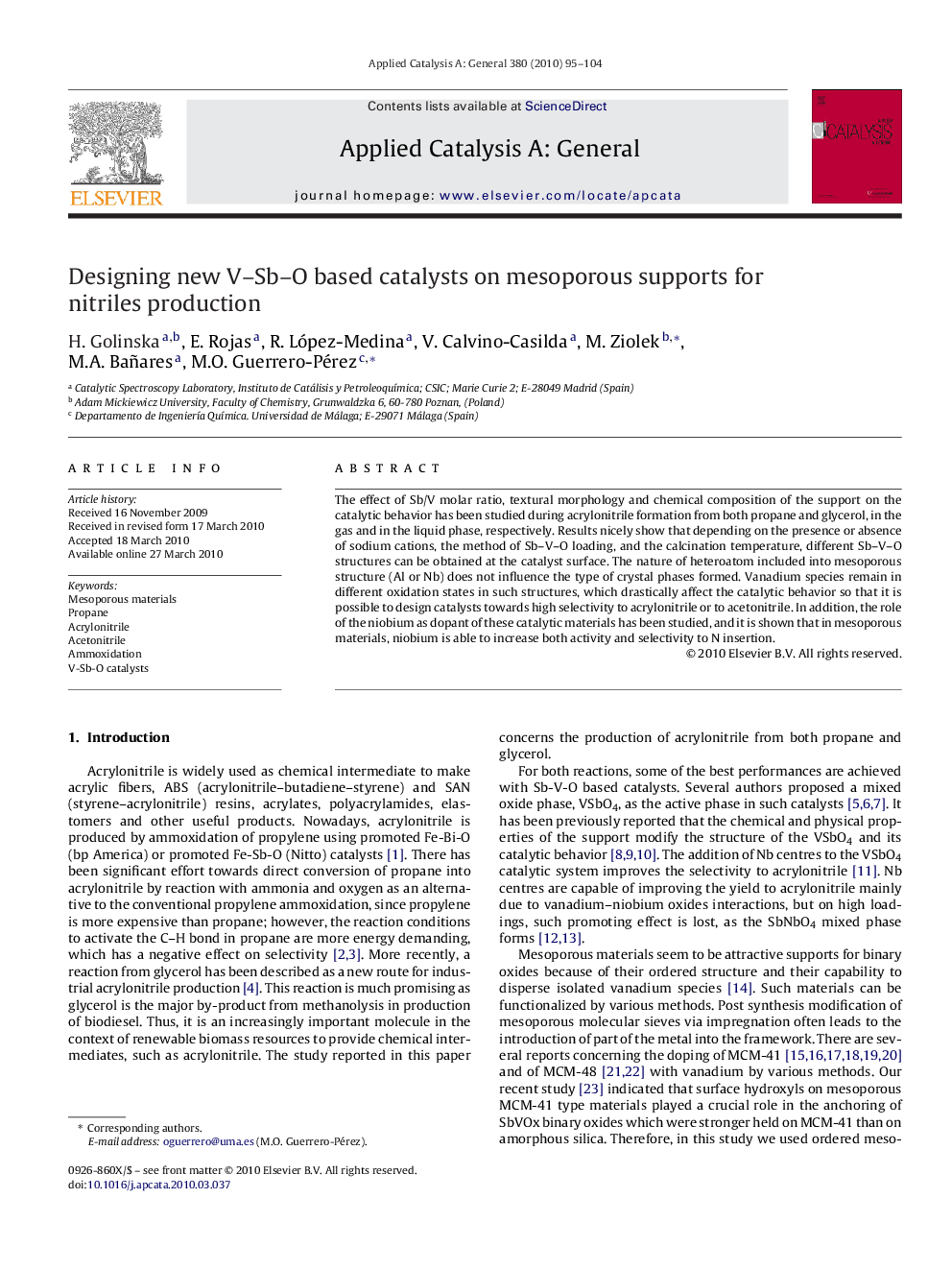| Article ID | Journal | Published Year | Pages | File Type |
|---|---|---|---|---|
| 41860 | Applied Catalysis A: General | 2010 | 10 Pages |
The effect of Sb/V molar ratio, textural morphology and chemical composition of the support on the catalytic behavior has been studied during acrylonitrile formation from both propane and glycerol, in the gas and in the liquid phase, respectively. Results nicely show that depending on the presence or absence of sodium cations, the method of Sb–V–O loading, and the calcination temperature, different Sb–V–O structures can be obtained at the catalyst surface. The nature of heteroatom included into mesoporous structure (Al or Nb) does not influence the type of crystal phases formed. Vanadium species remain in different oxidation states in such structures, which drastically affect the catalytic behavior so that it is possible to design catalysts towards high selectivity to acrylonitrile or to acetonitrile. In addition, the role of the niobium as dopant of these catalytic materials has been studied, and it is shown that in mesoporous materials, niobium is able to increase both activity and selectivity to N insertion.
Graphical abstractDepending on the morphology and chemical composition of the support, method of active phase loading, and temperature of calcination, different Sb–V–O structures can be obtained, which modulates the activity, being possible the design of selective catalysts towards acrylonitrile or to acetonitrile.Figure optionsDownload full-size imageDownload high-quality image (47 K)Download as PowerPoint slide
